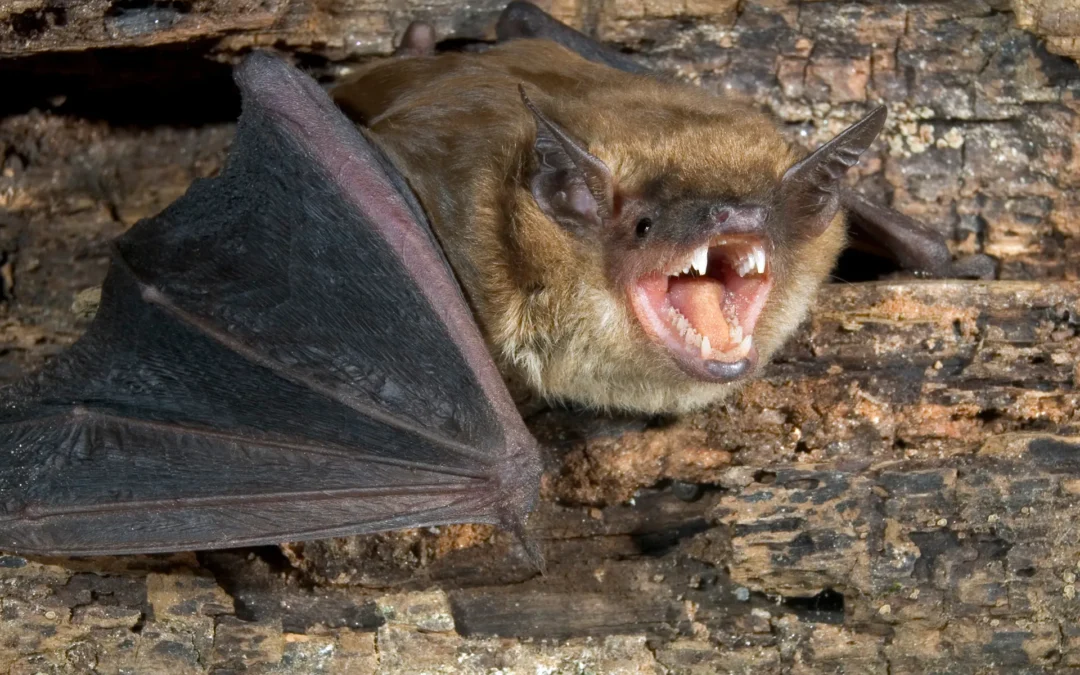The Destruction And Damage Bats Do To Your Property
When we think of pests and the damage they do to our homes, one culprit often flies under the radar but still causes a considerable amount of trouble for homeowners annually—the bat.
These small mammals are one of the dirtiest and most destructive animals imaginable when they invade our homes and businesses. They are incredibly problematic for several reasons:
- Structural Damage
- Health Concerns
- Strict State Laws
- Insurance Limitations
- Species Protection
- Timing Restrictions
All of these reasons add to big headaches and a long list of expenditures.
What You Need To Know About Bats
They are constantly on the lookout for quiet, dark, dry, cozy places, free from predators to roost, where they can get out of the weather and raise their young. Unluckily for homeowners, that’s a pretty fair description of our dwellings. They even enjoy the same living temperatures that humans do. Our homes’ attics, walls, rooftop eaves, crawlspaces, garages, sheds, and porches present attractive conditions many cannot resist. After all, why settle for a wet, drafty cave when your comfy, uninhabited attic is available?
You might be amazed to learn just how easy it is for them to get in. They can gain entry to your home through a hole no bigger than a quarter. They’ll squeeze their way in through vents and siding, around windows and doors, or cracks or gaps a mere 1/4″ wide. Bats also tend to return to the exact roosting locations for the entirety of their lives. Some live a long life, an average of 10 years, and that’s a long time to put up with recurring infestations.
There are over 1,300 known species today, and 14 of them are in Missouri, including the:
- Little Brown
- Big Brown
- Evening
- Northern
- Indiana
- Tri-Colored
They pose a significant health hazard. Bats harbor many parasites like fleas, mites, and even bat bugs. They can also transmit potentially fatal diseases like rabies and histoplasmosis and carry over 60 communicable viruses. All can bite, but aggression is not your only worry. Plus, you don’t have to be bitten to become infected. Your house’s HVAC and duct system circulates microscopic airborne particles from their urine and guano. You need to breathe the same air, and if you have bats living somewhere in your home, that is precisely what you are doing.
Of course, none even touches upon the physical damage these nuisance animals do, ruining walls, ceilings, roofs, and other structures inside and out. They are not chewers, but they don’t have to be. Their waste is highly corrosive— and they always defecate where they roost. It damages and destroys everything it touches, and the larger the colony, the greater the destruction.
Adding to the dangers and difficulties of dealing with these creatures, complicated laws protect them. You cannot remove them when they are young, nurtured, or during the winter or colder months when they could not survive if evicted. The government of Missouri has a lot to say about how they must be handled.
On top of that, restrictions on homeowners’ insurance policies make the situation even worse. Providers rarely cover bat removal and often will not even cover their damage if they identify it as “gradual” instead of “sudden.” Considering that many infestations may go undetected for some time, you are much more likely to be reaching for your wallet, not your policy.
If you have an infestation, you may not know if the colony is small. As their numbers increase, the signs of their presence increase as well. You may notice their waste, particularly around entrance points. You might also see stained walls or smell the acrid odor of ammonia coming from their excrement. You may also hear animal noises coming from the walls or attic. Lastly, you might see a bat (or more than one). It can indicate that you have a colony roosting inside or nearby. Even if you only spot one, it is not safe to assume you don’t have a problem.
The Most Effective Form Of Bat Control Is Exclusion
If you’ve noticed signs of a possible infestation, you need professional help. You do not want to attempt to deal with this problem because of the many risks involved. But the essential point of all is if you’re going to avoid a costly bat problem, the honest answer is to stop it before it occurs, and the only way to do that is exclusion.
Exclusion is a nuisance animal control service that is all about preventive measures. It means making a thorough inspection and assessment of your home, sealing up access points, adding strategic barriers, and removing the temptations that attract pests in the first place. When it comes to controlling, nothing works better. Because of that, it is the most popular, most requested wildlife control service today, not only for bats but also for other types of animals. It saves homeowners thousands of dollars and the frustrations and dangers of dealing with an infestation. It really is one of the very best investments you can make for your home. The service that pays for itself, not only in the damage it prevents but also in the peace of mind you have, knowing that you are protected.
The Only Pro You Need Is Advanced Wildlife Control
When you need a wildlife control service specializing in bat issues, look no further than Advanced Wildlife Control, the Springfield area’s number one bat control and exclusion specialists. We have the training, equipment, and experience to get the job done right. We’ll take care of your problem—before, during, or after it occurs—and develop a customized exclusion plan for your home that will make a difference.

